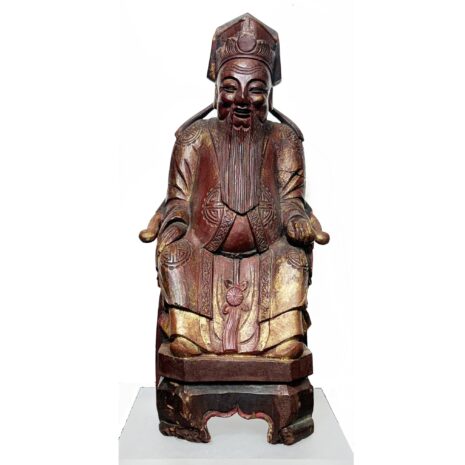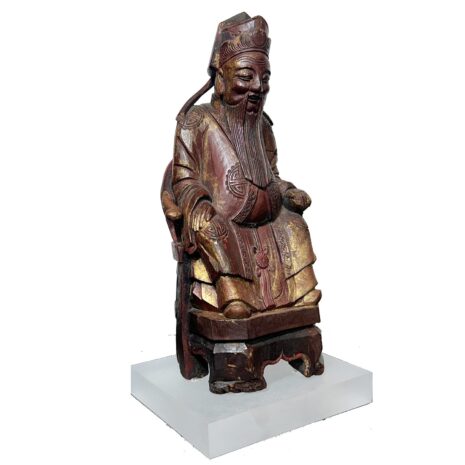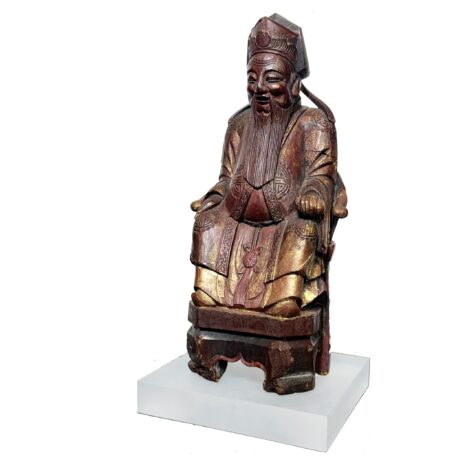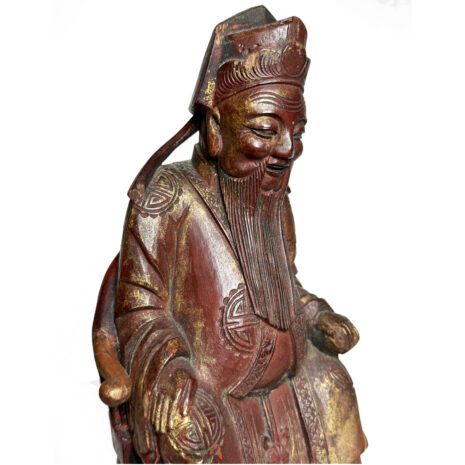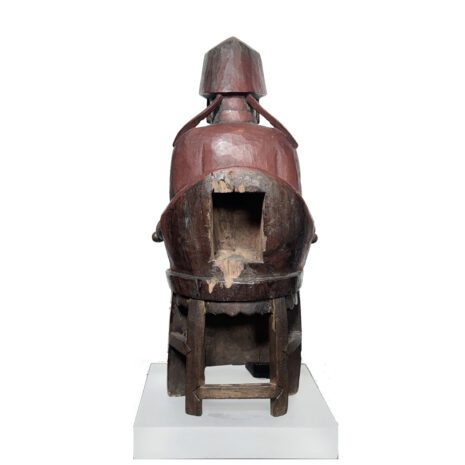Antique God of Wealth Caishen, China (19313)
Original price was: $745.00.$425.00Current price is: $425.00.
H: 10.25” W: 4.75” D: 3.625” | FREE SHIPPING WITHin Continental U.S.
Taoist God of Wealth (Caishen) portrayed as benevolent authoritative figure associated with wealth: holds tael, robe with coin decorations, painted with red and gold.
Description
Chinese wealth gods are ubiquitous and often appear and are venerated at home altars, temples, and business establishments. Yang writes (p. 76) worship of wealth gods was one of the most common cult practices in China among all strata of society from the poor to the wealthy but especially by the merchant class. This resulted from a Chinese pressing desire for wealth among all classes who recognized the difficulty to attain it through individual human efforts and the uncontrollable and random effects of chance and luck. Many Taoist deities specialized in different aspects of life; some addressed acquiring wealth while others were responsible for imposing social and moral restrictions on how it was acquired. Caishen was one of the most revered Gods of Wealth who were placed in a position of honor on a home altar along with other house and religious deities and required attention and veneration with periodic offerings and prayers. Attributes that identify him are his horseshoe chair indicating his high status and elaborate official’s attire and headwear. The plain coin on his cap is a wish for fortune and prosperity while the pairs of coins on his shoulders, knees and waist are also symbols of wealth and their raised carved characters are symbols of longevity. The rectangular “silver” tael in his left hand is another wealth symbol as is the well used gold coloring while the red is the color of fu , the Five Blessings of longevity, health, wealth, love of virtue and a peaceful death). During the two-week Chinese Lunar New Years celebration, incense is burned in front of home altar images and in Caishen temples and the traditional Cantonese New Years greeting is “ Gong hei fat choy” or ‘Wishing you happiness and prosperity” and “May you become rich.” The open rear cavity indicates it was consecrated by a Taoist priest. Except for old, stabilized insect damage to the base, this exceptional carving is in excellent condition and mounted on a frosted acrylic base.
Click here for the Blog Consecrating Wooden Images to Imbue Them with A Life Force
See VA instagram post Caishien.
Sources
Jonathan Chamberlain, Chinese Gods, Selangor, Pelanduk Publications, Malaysia, 1997.
Stephan Feuchtwang, Popular Religion in China: The Imperial Metaphor, London, Routledge Curzon, 2001. Fabrizio Pregadio, The Encyclopedia of Taoism, Volume 1, New York, Routledge, 2008. Keith Stevens, Chinese Gods: The Unseen World of Spirits and Demons, London, Collins & Brown Limited, 1997. Keith G. Stevens, Images of Asia: Chinese Mythological Gods, New York, Oxford University Press, 2001. C.K Yang, Religion in Chinese Society, Berkley, University of California Press, 1961
Additional information
| Weight | 5 lbs |
|---|---|
| Dimensions | 14 × 10 × 6 in |
| Period | Antique, Qing Dynasty |
| Date | 19th Century |
| Materials and Technique | Wood |
| Dimensions (inches) | Ht: 10.25” W: 4.75” D: 3.625” |
| Dimensions (metric) | Ht: 26.04cm W: 12.06cm D: 9.21cm |
| Weight | 1 lb 4 oz |
| Condition | Excellent, See Descripton |
| Item Number | 19313BCK |
| Shipping Box Size |

